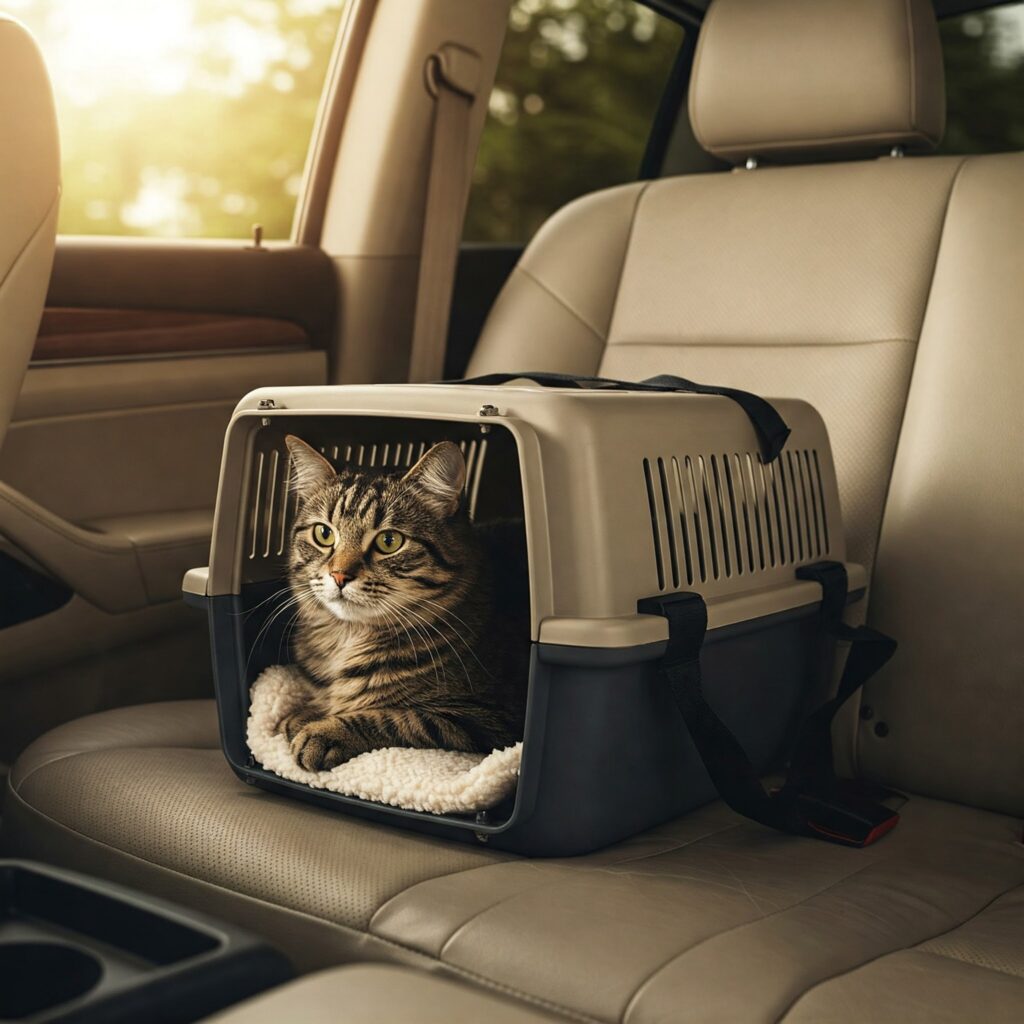Traveling with your cat doesn’t have to be stressful. With the right planning and preparation, you can ensure a smooth, comfortable journey for both you and your feline companion. In this guide, we’ll share practical tips and best practices to help you travel with your cat while keeping stress levels low for everyone involved.
Whether it’s a short trip to the vet or a longer adventure, proper preparation is key. From choosing the right carrier to keeping your cat calm during transit, these strategies will make the experience easier for both of you. Let’s dive into the essential steps for stress-free travel with your cat.
Preparing Your Cat for Travel

Acclimate Your Cat to the Carrier
Your cat’s carrier is more than just a travel necessity—it should become a safe haven for your pet. Here are some steps to build a positive association with the carrier:
- Keep It Out: Place the carrier in a common area at home, leaving the door open so your cat can explore it at their own pace.
- Comfort Inside: Line the carrier with your cat’s favorite blanket or bedding. Adding a few treats or toys can encourage your cat to enter voluntarily.
- Practice Sessions: Gradually acclimate your cat by having short, supervised “carrier time” sessions. Start by feeding near or inside the carrier and then closing the door for a few moments. Reward calm behavior with praise and treats.
Get a Veterinarian Check-Up
Before any trip, especially if you plan on long-distance travel or flying, schedule a vet visit. A health check can confirm your cat is fit for travel and help you discuss options such as:
- Medication: For particularly anxious cats, your vet might recommend mild sedatives or supplements like gabapentin.
- Vaccination Records: Ensure that all vaccinations and any required health certificates are up to date, especially when traveling by air or crossing international borders.
On the Road: Tips for a Stress-Free Journey
Securing Your Cat in the Carrier
For the safety of both you and your cat, it’s crucial to secure your cat’s carrier properly:
- Use a Seat Belt: When traveling by car, always secure the carrier with a seat belt. This minimizes sudden movements and protects your cat in case of abrupt stops.
- Back Seat Is Best: Place the carrier in the back seat. Avoid the front seat where airbags can pose a risk, and ensure your cat’s head stays inside the carrier to prevent injury from external elements.
- Regular Breaks: Plan stops every 2–3 hours. Use these breaks to offer water, check on your cat, and allow them a moment of calm outside the carrier if it’s safe to do so.
Managing Car Travel Stress

Cats are naturally sensitive to change, and car travel can be particularly stressful. To help your feline remain calm:
- Tire Them Out: A short play session before the trip can help reduce anxiety. A tired cat is more likely to settle down during the drive.
- Ambient Comfort: Keep the car environment quiet and cool. Consider playing soft classical music or even a soundscape designed for cats. Many pet owners also swear by Feliway® pheromone sprays applied to the carrier’s bedding to create a calming atmosphere.
- Consistent Routine: Try to mimic your cat’s home routine as much as possible. Feed them at regular intervals and stick to familiar practices during stops.
Flying with Your Cat
Choosing the Right Flight Option
When air travel is unavoidable, consider the following to minimize stress:
- In-Cabin Travel: Most airlines allow small cats to travel in the cabin. This is often less stressful than cargo travel, as your cat stays close to you.
- Direct Flights: Whenever possible, choose direct flights. Fewer takeoffs, landings, and connections mean less overall stress for your pet.
- Early Preparations: Contact your airline well in advance to confirm pet policies, carrier dimensions, and any necessary paperwork. A little extra planning goes a long way.
In-Flight Comfort Strategies
- Carrier Comfort: Ensure your cat’s carrier is well-ventilated and large enough for them to stand, turn around, and lie down comfortably.
- Familiar Scents: Include an item that smells like home—such as a worn T-shirt or blanket—to reduce anxiety.
- Test Runs: Before a long-haul flight, consider a short test trip to help your cat get used to the experience of flying.
Additional Travel Considerations

Litter and Hydration
- Litter Box Options: For long trips, especially by car, pack a small, portable litter box or use disposable pads in the carrier.
- Hydration: Offer water at every stop. However, avoid feeding your cat immediately before travel to minimize the risk of nausea.
Identification and Safety
- ID and Microchip: Make sure your cat wears a collar with an ID tag that includes your contact details. A microchip is also highly recommended.
- Emergency Kit: Pack a small kit containing your cat’s medical records, a first-aid kit, extra food, treats, and cleaning supplies in case of any mishaps.
Final Thoughts
Traveling with your cat can be a rewarding experience with the right preparation. By gradually acclimating your pet to their carrier, maintaining familiar routines, and prioritizing safety, you can make journeys comfortable for both of you.
Since every cat is unique, experiment to find what works best. Happy travels!
